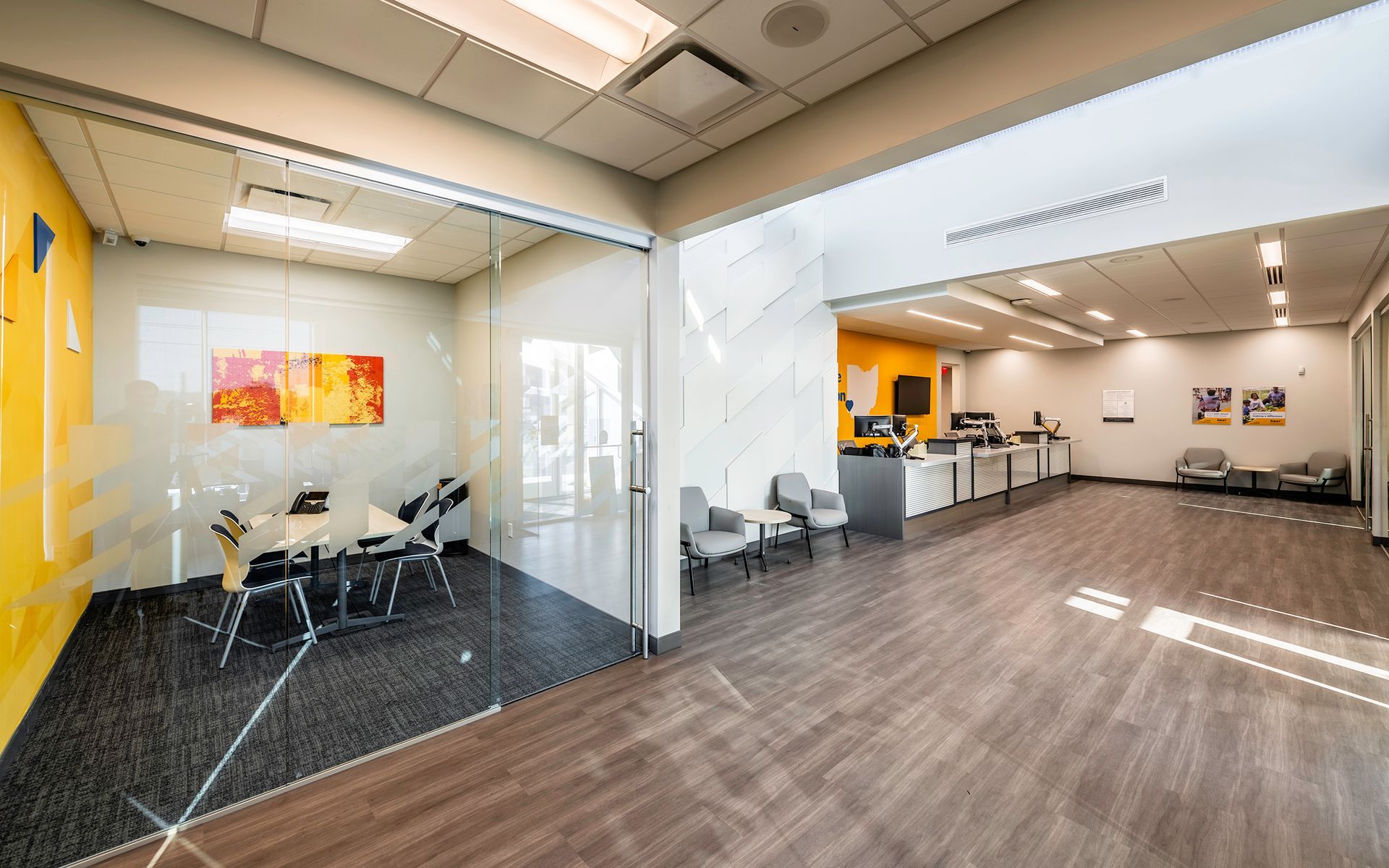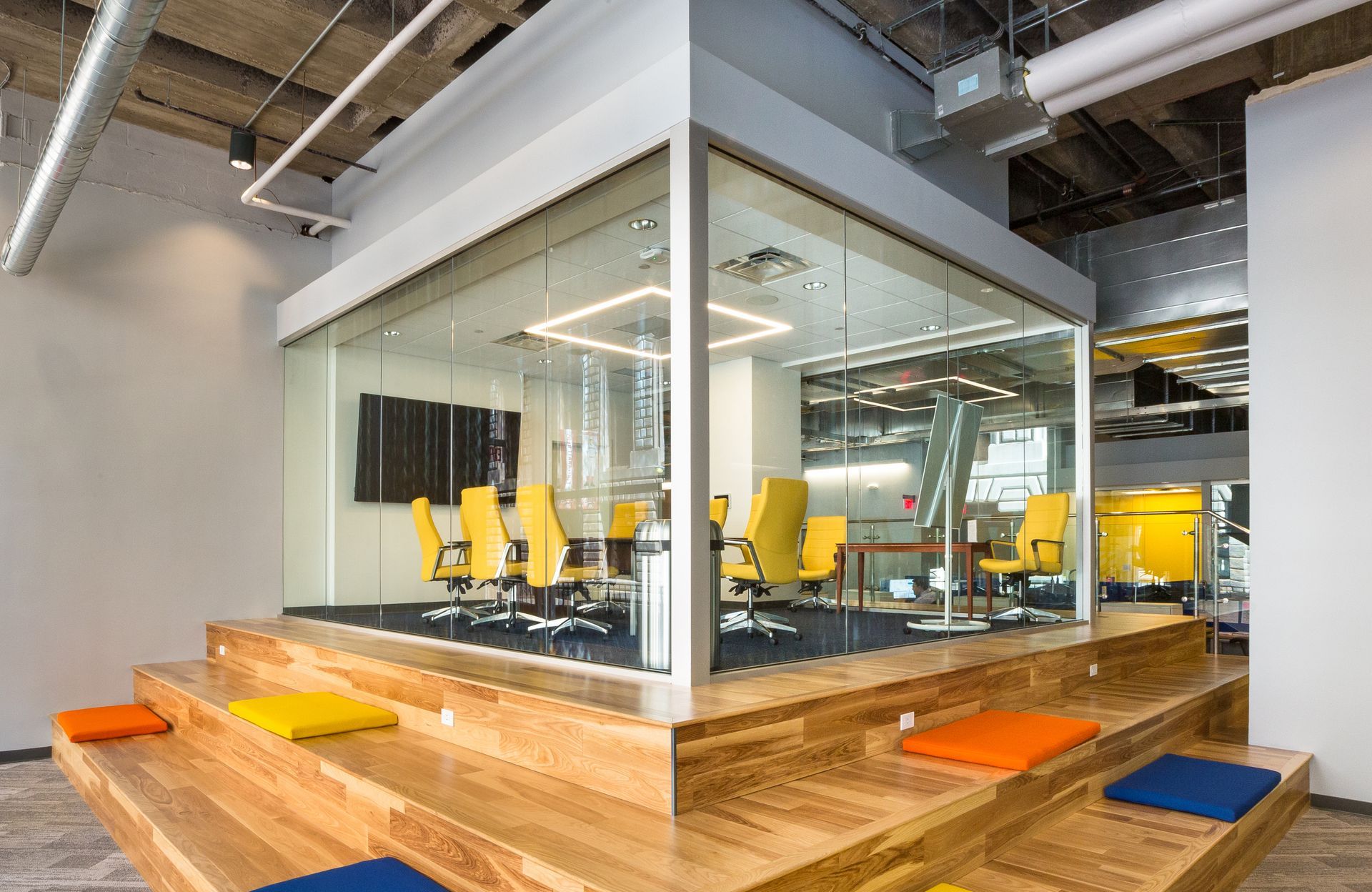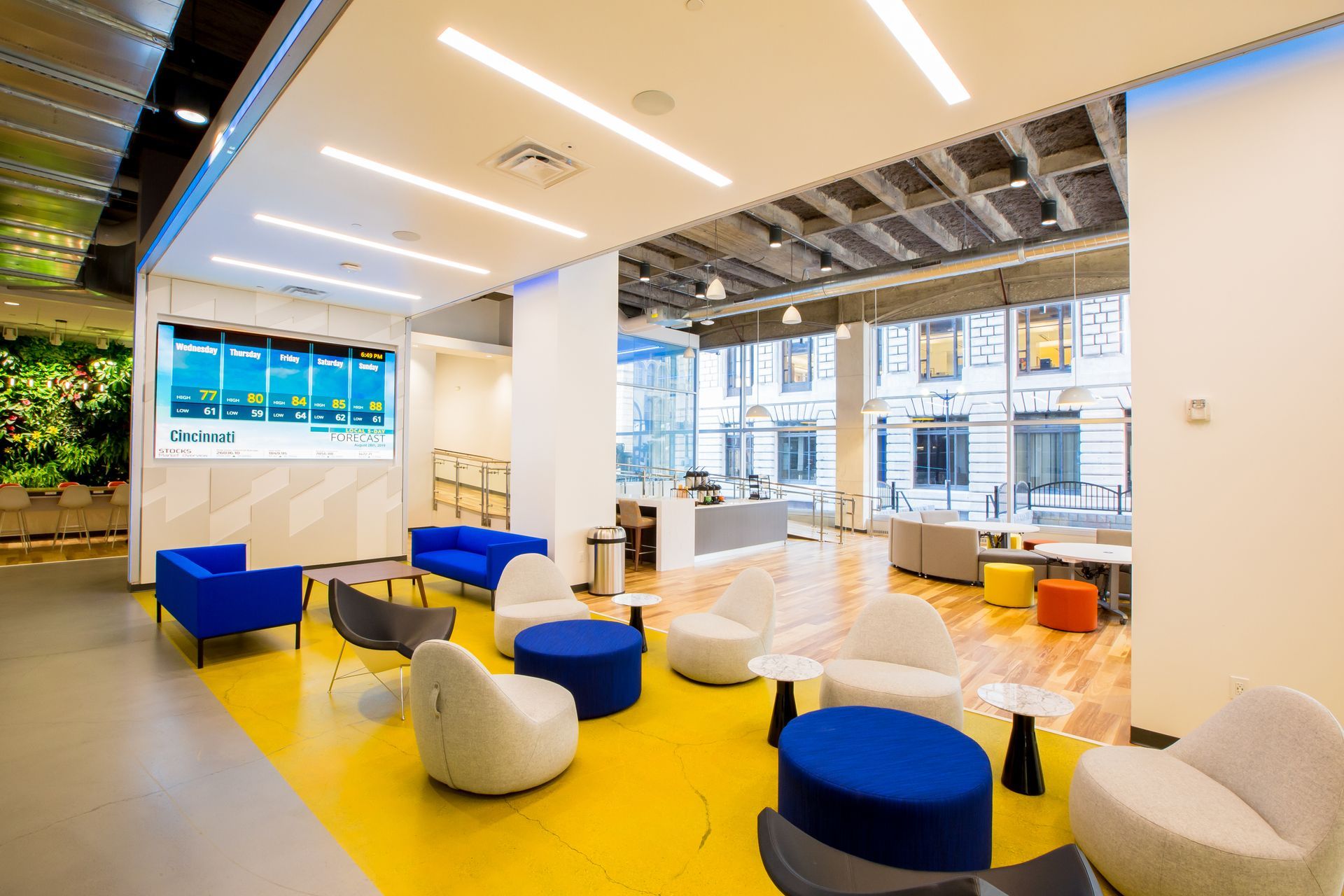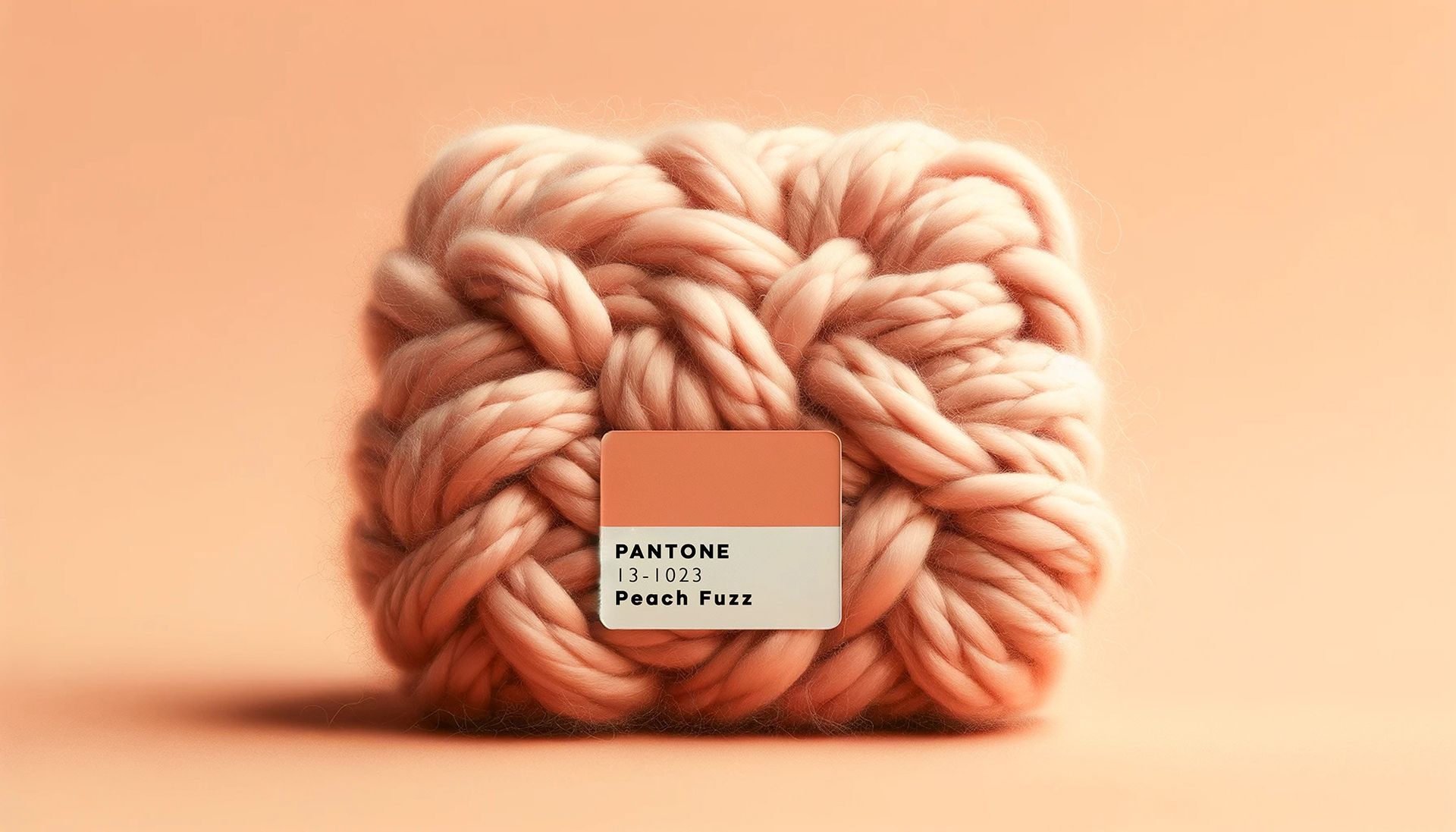By Jeff Klump,
President of K4 Architecture + Design
Menu
Follow us on:
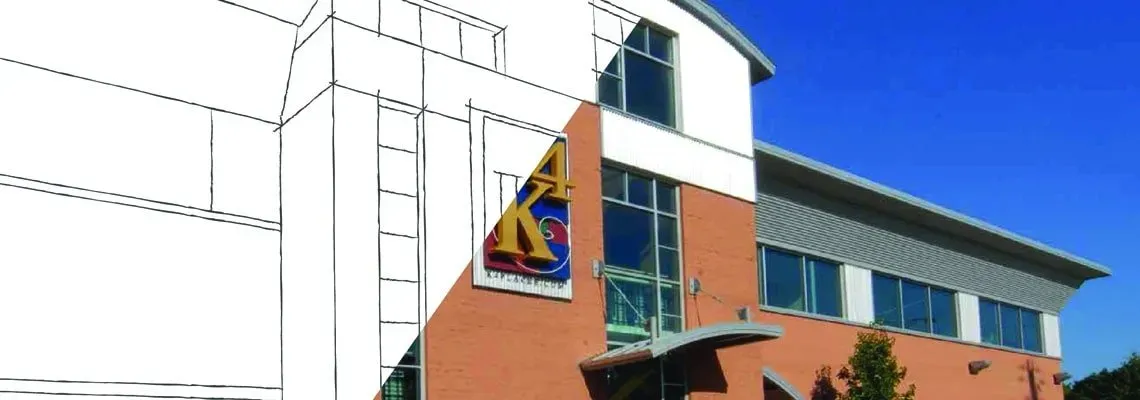
Let’s first explore how the definition of the coffee shop has evolved…from simply being a beverage offered at a restaurant to an actual stand-alone destination, service and experience that provides and encourages co-working space, meeting opportunities, and community gathering, all with FREE WiFi! Not yet convinced it is an “experience?” Sirius XM radio even has a station called The Coffee House featuring acoustic covers of today’s pop and rock music, taking the experience a step further with the creation of a musical genre.
In the past, bank leaders would have not entertained people coming in to “hang out” in the bank lobby. Fast forward to present day, it is important that bank staff welcome the opportunity to meet with patrons to cross-sell and build relationships in a comfortable, no-pressure, and relaxing environment. The cohabitation of two different retail entities is nothing new, banks have been moving into endcaps or retail centers for years. In providing bank patrons with an experience, what makes these three distinct retail branch/coffee shop models work?
Richwood Bank took a unique approach to the café concept by integrating and branding the entire operation with an in-house staff and team. The coffee shop is located within the branch lobby and internal staff act as baristas to prepare and serve the craft beverages. A natural addition to the Richwood Family of Companies, Richwood Coffee seamlessly utilized existing brand elements and a similar branded logo. In this case of the bank owned and operated café - there are no competing brand colors, elements, or finishes to consider as in the other two models discussed below.
As a financial institution, Richwood could not legally sell food and beverages, but with great leadership leading the charge on some creative and “outside the box” thinking, the Richwood Bank team came up with the idea of using the cafe concept as way to give back to the community. Instead of a monetary exchange for the goods sold, the funds are donated to a local organization or institution that the customer personally selects, creating an innovative community support and re-investment model to accompany the new enterprise. This model works well for Richwood Bank and in communities that may not have a large presence of competing local or national coffee shops. Bonus points for a walkable location!
Looking to grow into new markets, New Carlisle Federal Savings Bank wanted to expand in Springfield by opening a second location just north of the downtown area, with the goal of attracting customers who may pass by the new location during their workday. The bank also wanted to offer the amenity of a separate tenant, an attached chocolate + coffee cafe providing an additional source of lease space revenue. This symbiotic relationship of the bank and coffee shop helps to draw more customers than either business would otherwise draw on their own, while increasing both the destination and experience factors for both.
Meeting the expectations for two separate drive thru’s on the same site (for both the bank and Winan’s) was a unique challenge and ultimately a concept was developed to provide a safe and functional solution where neither competed with the other.
While there is no common or shared space in the plan, Winan’s staff and customers do have direct access to NCF’s lobby and facilities through a set of full glass double doors. The concept allowed Winan’s their own separate tenant space that could be operated at different hours from the bank, but it also created a clear delineation of separate finishes, so that each organization could use their distinct brand colors and elements, finishes and fixtures.
This model works best for those branch locations that attract commuter traffic and where the co-habitation of the two businesses can draw more patronage than each would on their own. Bonus points for branches that can benefit from the demographic studies of the other retail enterprise!
Combining an existing coffee franchise with retail bank space in an existing building posed special challenges and decisions as pertaining to the design and code requirements that would allow for customers and employees to use both co-tenant spaces. In response to this, a second drive thru lane for the coffee shop, that would not compete with the bank drive thru, was created by adding approximately 120 SF to the front right side of the building for Biggby Coffee.
Another consideration was the shared lobby concept, that could be separated due to the varying hours of operation by both businesses. The existing central lobby was designed with a variety of comfortable seating that could be utilized by each business, but allowing separation by a pre-existing overhead roll-up gate, with two separate means of egress for both tenants when the overhead gate was closed in the evenings. This allows Biggby Coffee to remain in operation during non-banking hours.
The interior was carefully considered to highlight, yet not clash, the existing branded colors from both Farmers & Merchants and Biggby Coffee. The dark neutral tones of the floor, casework and furniture compliment the reds and oranges of both business brand elements.
This model would work best for those branches wanting to benefit from the cross-selling opportunities of a captured audience, while not assuming risks and regulations that come with food/beverage operations. Bonus points in allowing for increased visibility for both brands and demonstration of social responsibility and community investment via facility upgrades and successful business partnerships.
In conclusion, if your organization is considering driving new business and building unique customer relationships, any of these three concepts might be a noteworthy suggestion. There may never be the “perfect” fit but these three forward thinking banks utilized their strengths, considered their weaknesses, studied their demographics, and found a solution that worked for their individual situations and business goals.

